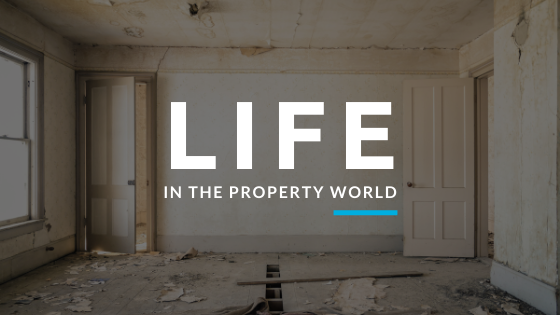|
The property: Conveniently set in a sought-after Kamo West location, this classic 1960s three bedroom 100sqm home had had modern touches applied throughout, and sat on a roomy 670sqm (approx) elevated corner section. It was within easy reach of schools, the sports ground, and all of Kamo's other amenities. Marketing campaign: Our sellers had already found their next home, so time was of the essence to get this great property sold. Working with the Bayleys team and our extensive database, we got this property sold just two days after going on the market. Summary: The main focus of our sellers was a stress-free sales process, so it was an absolute pleasure working with them to make sure the sale went through as quickly as possible, with everything taken care of. If you'd like to discuss your property plans with me, then let's talk about that, and see if I'm also able to help you. Cheers. Paul | 021 606 460 | paul.sumich@bayleys.co.nz
0 Comments
Nothing beats the experienced eye and attention to detail of an experienced home stager, but, these tricks will make a difference if you decide not to use one.
Make a great first impression: The first impression is everything, so it’s important to keep the outside of your home as inviting as the inside. If the front door has stains or dents, add a fresh coat of paint and place plants on either side of the door. Pick a planter that’s clean, simple, and complements your home’s style, but make sure it’s sizable enough to be seen from the street. For maximum impact, try going with a single flower such as a hydrangea, which can work in most climates, or boxwoods because they’re a classic that always look great. Also, mow the lawn and keep all your windows clean. Pare down the living room furniture: If you have bulky furniture in your living room or too many tables or chairs, sell them or put them in storage - they make the space look small. On the other hand, the room can look off-putting if the furniture is too small. Find a balance. Also, if the pieces are stained, have them cleaned. You want the living room to be comfortable so that a buyer can imagine themselves there. Create a minimalist kitchen: A kitchen is often the heart of the home, but it shouldn’t look lived-in when you’re trying to sell it. Remove everything from the counters and the dining table, including food and appliances. But definitely display a fresh flower bouquet or a bowl of lemons somewhere. For some reason, lemons resonate with buyers. Another tip: Your kitchen will smell great for hours if you rub a cut lemon inside of the sink. Define each space: Most people have a hard time visualizing, so make it easy for any buyer to define each space. If you have a room that you use for storage but also as a guest room, for example, clean it out to give the space a singular purpose. If you want to sell it as a guest bedroom, remove any boxes, buy a clean-lined headboard, clean the nightstands, and add table lamps for mood lighting. These touches all make the room feel inviting to prospective buyers. Also, decorate your couch with oversized pillows. Big pillows create volume in a room. But avoid throw pillows with loud patterns. Monochromatic shades such as green, pink, yellow, and orange work best. Remove personal photographs: Make sure your home is free of any family pictures or your kid’s artworks. Potential buyers don’t want to go down memory lane with you—they want to make it their own home. Remove those photos from the fridge, walls and side tables, and replace them with coffee table books, candles, or landscape images. Transform bedrooms into hotel rooms: Channel the vibe of your favourite hotel when you’re staging your bedrooms. That basically means less is more—and always use white sheets and pillows. The white creates a clean aesthetic, for colour additions use throws, blankets and cushions. Take the same idea to the bathrooms and select white towels. Also, remove anything from the countertops in your bathrooms such as cans of shaving cream, toothbrushes, and perfume bottles—they’re too distracting. Don’t overstuff drawers and wardrobes: Prospective buyers will open your drawers and wardrobes. Declutter by moving as many items as you can to storage and folding your clothes neatly. Organise your clothing by type, and use one style and the same colour of hanger throughout your wardrobes. Consider adding peel-and-stick wallpaper to the back wall. Castano says that it adds a layer of luxury without a high price tag. There you go, a few tips to get your place looking tip top if you decide not to engage the services of a professional stager. If you’d like to talk more about this, or anything else to get your home sale ready, then just let me know - Cheers, Paul Behind the sold sign, 1 Kentia Lane.
There’s a bit more than just the ‘sold’ sticker going up… Julie had sold a previous property with myself and an associate - and when the decision was made to move back down to Auckland to be closer to family, she called me back in to help, this meant a lot - as repeat business is always really good business to have. The trust factor was high as I outlined our plan for getting sold, and working with her timeline for the move. We decided on an Auction campaign, because even though the market is changeable at the moment, a premium cash buyer is still very much sought after. We also took effort in the preparation of the property, with a garden/section tidy, and a roof/gutter clean all arranged prior to going on the market. After three weeks we had the Auction, and although there were no cash buyers on the day, we then priced the property as we had good market feedback. Within a week we had a multiple offer situation, with three conditional offers to decide on. Julie was able to work with the offer that made her move back to Auckland a certainty, both with the timeframe and overall sales result. It has been a pleasure to have been able to help Julie with two property sales now, and know that this last move will enable her to be back closer to family. If you'd like to discuss your property plans with me, then let's talk about that, and see if I'm able to help you. Cheers. Paul | 021 606 460 | paul.sumich@bayleys.co.nz The purpose of showing your home is to hook a buyer. You want the buyers to come through your house and be impressed - so impressed in fact, that they’re ready to make an offer!
In this changing market, there will likely be more private viewings as buyers take their time on deciding which of the available properties fits them best. You’ll have one chance to make a great first impression on the potential buyers, so make sure to follow these five helpful tips to really make it count. 1. Focus on the outside. Make sure that you don’t neglect the outside of your home. Curb appeal can make or break the odds of someone even bothering to get out of the car to come in. If they pull up and see a home with a lawn that obviously needs edging and has an unkempt flower bed, they’re going to wonder what else hasn’t been cared for properly. You want the outside of your home to be spotless. Clean the siding, the windows, and the doors. Make sure there are no dirt smudges, no cobwebs and that anything that needs painting has been spiffed up. 2. Take yourself out of the house. That means that you want to take out all the personal stuff. Remove the family photos from the wall or tables. You want the home to look neutral so that the potential buyers can look at your house and picture it as themselves living there. Everything should be as neutral as possible in terms of personal items. 3. Remove all the extra clutter you see at first glance. If you look around, it’ll amaze you at how much stuff you’ve accumulated over the years. Some of it might very well be important, but that doesn’t mean that your potential buyers should see it. When you have a lot of clutter, it shrinks the living space of the house. It makes it look and feel cramped and smaller. Many homeowners get something called house blindness. They’ve lived in the home for so long with the same clutter that they don’t even really see it anymore. But a stranger will always notice. So clean out your house and make the space as big as possible. 4. If you have a pet, no one that walks through your house should be able to notice it exists. That means no cat litter box, no dog to jump on anyone, no food sitting around in a dish. Your home should not have any pet odors. Having a clean house that’s odor free is a big selling point. You don’t want to lose a possible deal just because they can smell your pet’s presence, or your pet makes a bad impression. 5. Stage your home! You can hire a professional or you can do it yourself. Stage your living areas in a way that shows off your home. You can rent furniture to make your home furnishings look good if you don’t use a stager. Someone who knows how to stage a house knows how to play up the best features of your home and knows what to bring in or get rid of to make the entire house appeal to a buyer. First impressions are HUGE when showing your home to potential buyers, but by following the simple tips above you will be well on your way to making a great impression and, hopefully, receiving multiple offers! (And if you are at all anxious about these important steps, just reach out to me - I can help guide you through this process no worries!) Cheers, Over the past two years, we’ve lived through one of the most stressful periods in recent history. Because of the health crisis, many of us have spent more time at home and that’s led us to re-evaluate both what we need in a house and how much we appreciate having a safe space. If you’ve found your current home isn’t filling all your needs, you may be wondering if it’s time to find a new one.
There’s reason to believe a change of scenery could boost your happiness. Catherine Hartley, an Assistant Professor at New York University’s Department of Psychology and co-author of a study on how new experiences impact happiness, says: “Our results suggest that people feel happier when they have more variety in their daily routines—when they go to novel places and have a wider array of experiences.” A move could be exactly the new experience you’ve been looking for. If that’s something you’re considering to better your lifestyle, here are a few things to keep in mind. Approach Your Decision Thoughtfully and Explore Your Options Buying and selling a home is a major life change, and it’s not a decision you should enter lightly. But, if you’re questioning whether or not a move would bring you more happiness, it’s important to explore if it’s the right choice for you. To find out more and discuss your options, reach out to a local real estate professional. They’ll explain the process – including how to list your existing house and search for a new one – in clear and simple terms. You should also think about your lifestyle and what you’re hoping to get out of your move. What needs aren’t being met in your current home? What features would bring you more joy and make your life easier? For example, are you now working remotely and need a home office? Do you crave more fresh air and open outdoor space to unwind in? Knowing the answers to these questions can help you get started and position your real estate advisor to work with you so you can find just the right home. Consider a Location with Weather That Will Boost Your MoodHome features aren’t the only thing to consider. You should also weigh your options when it comes to location. Is the weather something that’s important to you? Does it have a tendency to impact your mood? If it does, you may want to factor it into your next move. Better weather can mean different things to different people. Some prefer the heat, others cooler temperatures, and some want to experience all four seasons. Think about what makes you feel happiest and prioritise that in your home search. If you’re moving to a whole new location, then I’m a great resource with the strong nationwide Bayleys network to support you along the way. Bottom Line Moving could provide you with a fresh beginning and the chance to find happiness in your new home. Contact me to talk about your goals and options in the current market. Let’s talk. The real estate market is busy right now. The pandemic has allowed people to rethink their lifestyles and look for more space. Technology has shown that many jobs can be done remotely, which opens up the potential for people to live further from their work. All these affect real estate sales, so if you are planning to sell your home in 2022, here's what you need to know.
1. Find a Good Real Estate Agent To Market Your Home A lot of property research is done online these days, so having a best-in-class real estate person and company to market your home is vital. They should take professional photos, deal with inquiries and manage the selling process for you. They should have access to marketing tools that will get your home seen by thousands of people. Real estate agents will also accompany viewers to your home, which gives you additional security and selling power. I offer best-in-class full service campaigns for you! Read How I Do It 2. Prices Are Strong, But There's a Catch If you are selling your home, the good news is that real estate prices are still strong, and there is demand for homes with more space, such as an office. The downside to this is that if you are buying a home, you may not be able to afford what you could five years ago as the price has increased significantly since then. That's why it's very important to think things through and budget beforehand so you can work out whether this is the right time to sell. 3. Be Prepared for a Fast Sale The demand for homes means that houses can sell faster than you think, so work with your agent to plan for what you will do if you do get a quick sale. You need to ensure all your documentation is up to date so it does not delay the selling process. Think through various scenarios such as putting your belongings into storage temporarily, renting a property while you research an area, or starting to look for your dream home. If you get a good offer, it would be a shame to decline it because you don't have a plan of where to go. 4. People Want Space The pandemic has seen people confined to their homes, leading to a craving for more space. An important thing to do if you are selling is to radically declutter your home so it looks spacious, and anyone viewing it can see the potential for living space. If necessary, put some belongings into temporary storage to make your home clutter-free. Trends on a home buyer's wish list include open plan living and an office area. You don't need to do all that to your house, of course, but let a buyer visualise the potential. They can't do that if the place is cluttered. 5. Clean Areas Are Vital COVID-19 also taught us the importance of keeping things clean. People looking at real estate today are looking for tidy homes with clean surfaces that can be wiped down easily. Give your home a deep clean after your declutter to look fresh and appealing. When your real estate agent markets your home, a clean space is more appealing to people. People are also looking to avoid extensive renovations right now, so making sure your property is up to date with maintenance and warranties is essential. You don't have to do a complete renovation if you are selling. Just tidying the place and keeping it clutter-free makes a big difference. 6. Millennials Are Buying Homes One of the trends affecting the real estate market is that Millennials are increasingly looking at buying homes. They do most of their research online and are not only looking for bigger and more up-market homes but want sustainability too. If you have solar panels or garden space where food can be grown, these trends appeal to millennials. Have Housing Prices Peaked? During the height of the pandemic, house prices rose significantly. While they are still high, there are indications that this has slowed. It is worth working with your real estate agent to market at the best price and be aware of the local trends if you are selling. Interest rates remain historically low but are increasing as a consequence of the financial recovery post-COVID pandemic, so getting the timing of your sale right is vital, and that's where a discussion will set you on the right track. Let’s talk. What does 2022 hold in store for property buyers and sellers? OneRoof asked experts for their predictions. It’s a tough year to predict, with so much uncertainty around everything from Omicron to inflation. First home buyers Life has never been easy for first home buyers. The Government inadvertently piled on the pain last year by tightening up the Credit Contract and Consumer Finance Act (CCCFA). The new rules from December 1 caused banks to question every last piece of avocado on toast eaten by wanna-be first home buyers, shutting many out of borrowing. The intention of the legalisation was to clamp down on dodgy consumer lenders. But it backfired hitting first home buyers and others. Mortgage broker Stuart Wills, who founded the Kiwi First Home Buyers Group NZ on Facebook, says: he wouldn't be surprised if there's “political pressure to change some of the settings for first-time buyers”. That includes the CCCFA and could extend to making the government’s First Home Grant and First Home Loan schemes. Currently buyers in main centres struggle thanks to the bar being set too low on incomes and purchase prices. Wills adds: “I don’t think property prices will skyrocket. But they won’t come down. They might just level off which makes it easier for first home buyers to catch up on deposits.” Investors Property investor and owner of iFindProperty Nick Gentle agrees that a number of policy/regulatory/tax changes by the Government as well as sharply rising prices are acting as deterrents to investors and even leading some to consider exiting the market in 2022. The increased pressure on investors includes tighter loan-to-value-ratio (LVR) rules, an extended “bright line” test taxing gains for 10 years, the new CCCFA rules making it harder to borrow and the removal of the ability to claim tax deduction on interest payments. Investors also face interest rate rises and more expensive houses to buy. That doesn’t signal the end of investing, however, says Gentle. “The end of the world comes along every three or four years, doesn’t it? One group of investors may pull out, but more will come along and find a way to make it work.” Gentle predicts the investors who will flourish in 2022 are those who take it slowly and invest for cash flow first before capital gain. “That’s investors who are paying down their properties, have sensible debt (and) are willing to grind through it and create value. The people who are going to struggle are those who are looking for capital growth. They have on the basis of strong personal incomes bought properties that have low rental yields.” Rising interest rates are a concern for investors and there is a concern about rent controls, says Gentle. Renovators Renovators face a difficult year thanks to unpredictable supply chains and pressure on labour costs. Add to that the ability to borrow to finance the work, which could prove one hurdle too many for New Zealanders dreaming of renovating their homes in 2022. Mortgage broker Campbell Hastie, of Hastie Mortgages, says the CCCFA changes could stop some renovators in their tracks. The other issue, says Hastie, is the tension between banks requiring a fixed price contract for work, and builders being unable to provide one. “Because the cost of silicone and timber and Gib board and all the rest of is going up, the builder can’t give you as much clarity as he might have been able to in the past. Banks are also asking for additional information or verification from a quantity surveyor before lending.” Hastie has seen banks cut the amount they will lend on a renovation from $550,000 to $450,000, meaning the borrower can’t do such an extensive renovation. John Tookey, professor in construction management at AUT, says the availability of materials and labour shortages are going to make it tricky this year. The problem with putting off the job, he says, is that we don’t know how the currently difficulties could last for. The very worst-case scenario is homeowners might be waiting a decade. “You need to balance the upside gain of renovation against the downside risk of unknown cost and time escalations. This is going to present enormous challenges for the next couple of years as the wrinkles get ironed out.” Sellers Caution will rule in 2022, says James Wilson, head of valuations at OneRoof’s data partner Valocity. Wilson can see a number of submarkets with their own themes, but the word “caution” comes out when he discusses each. For example, owners of lower priced properties will most likely sit on their hands a bit as they did before Christmas, concerned about their ability to buy, if they sell. “If the vendor sells at that price bracket, what else can they buy?” The top end of town is in a different position to a year ago. “There was definitely a bit of a drop in buyer demand, just before Christmas,” says Wilson. “Auction clearance rates are dropping, and the market is still pretty quiet. You're not really sure what the confidence out there will be. Everyone's a little bit cautious of what's going to happen.” On the upside for vendors very few properties are being taken to market currently, says Wilson. That means vendors are likely to see relatively high interest. Another positive for vendors is despite interest rate rises, buyers can still afford generally to pay the current market price points for properties, says Wilson. He adds: “Headwinds will not be strong enough to put the prices down just yet. Will we see values continue to increase at near on 30% year on year that we saw last year? I think it's highly unlikely.” *This article first appeared on oneroof.co.nz, Jan 14 2022 My two cents worth? The shambles that is the CCCFA has hurt first home buyers and people that want to borrow for renovations much more than it has helped. Extending the bright line timeframe on investment properties - well that just means people will generally just hold onto their investment properties for longer - which is the opposite of freeing up some housing stock for first home buyers… Combine that with the shortage of materials and supply chain issues for new builds, and I think that we’ll have a year where demand for existing properties is still strong - prices may come back a little bit, but here’s the question - what else are you going to buy? Options are limited. For a comprehensive discussion about your property plans, then just get in touch anytime. 021 606 460 | paul.sumich@bayleys.co.nz Cheers, Paul
Mum and dad property flippers have all but disappeared, with the Government’s shake-up of the housing market in March the final nail in the coffin, new research suggests. According to figures from OneRoof’s data partner Valocity, the number of properties resold within 12 months of purchase has plummeted. In the first six months of this year there were just 641 resales, compared to 1620 in the first six months of 2020. “We are talking about a reduction of over half,” says Wilson “That’s very much the mum and dads being take out of the market.” The reason amateur flippers, not professionals, have been hit is that the bright line test doesn’t affect traders, who are already paying income tax on their capital gains anyway, says Garreth Collard, property accountant at EpsomTax.com . “Traders have always been liable to pay tax on their gains because the activity is entered into with the view of making a profit.” Technically, people who renovated their own homes with the intention of flicking on at a profit should also have paid income tax on their gains, but most flew under the radar, says Collard. Overall, the practice of flipping has fallen off dramatically since its height in 2013, when 9171 properties were resold within 12 months of purchase. That number dropped to 6,726 in 2015, following the introduction of loan-to-value-ratio (LVR) restrictions and the two-year bright line test. The total number of flips for 2020 was 3638. “The downwards trend has been intensified further by the lack of new listings,” Wilson says. Mortgage broker Kris Pedersen, of Kris Pedersen mortgages, says the extension of the bright line test to 10 years and the removal of interest deductibility on investment properties have divided the market. “Mum and dad investors are now very much concentrated on new builds.” By buying new, or off the plan, they can still claim their mortgage interest and aren’t forced by the bright line test to pay tax on their gains when they sell, he says. “That’s the easier way to go.” Pedersen adds: “Because so much of that standard investor has moved into the new-build market, it has opened up more of the buy, renovate and hold, or buy, renovate and sell market to professionals. “One of my large traders thought [the Government changes] were fantastic. He went unconditional [on a property] one or two days after the announcement, and has since renovated it and made a half million dollar profit. “He could see the opportunities to pick up a property at a really good price because people were backing off those types of properties on the back of the announcement.” The bright line rules mean it’s nigh impossible for even small investors or serial own home renovators to evade tax now. Lawyers need to complete and file IR833 declarations to the Inland Revenue Department (IRD) on every sale, says Collard. “If (the IRD) sees a pattern their $2bn computer system catches things that would have fallen through the cracks.” Owner-occupiers can still do some flipping tax-free, as the rules allow people to do up and flip a maximum of three properties in a rolling five-year period if they are primary residences. Collard says his phone used to ring hot with clients looking to trade. Some had taken $20,000 courses to learn how to do it, although he notes “there is no secret sauce”. These days there are very few such calls. He notes that some small-time traders have found that they can’t flick the property on at the level of profit outlined in the courses and have ended up holding on and renting them out. It’s not just the bright line test stopping mum and dad flippers, says Collard. Other issues include: • Building supply chain delays. Unless you’re a big building firm it can be difficult to obtain the products you need to do the job. • Escalating costs of building materials. The big building companies have supply contracts, can buy at scale and use futures contracts to smooth out the price. Small traders can’t do this, although some are teaming up on trades, says Collard. “If you're a firm without any leverage, or you're just mum and dad flipping then you are quite exposed to timber prices going up. It's harder to make it back.” • Tradie shortages. The closed border and building boom have meant tradespeople are difficult to come by and expensive to employ. “The traders who make it work probably have a good relationship with a builder,” says Collard. Many successful flippers have a background in building or other trades themselves. • Lockdowns can be catastrophic. Traders have holding costs, including mortgage interest payments. A five-week lockdown can eat significantly into the profit. The issue there is that quite often flips are right down to the wire, says Collard. “You throw in a four-week lockdown, and it could be a disaster.” Pedersen says knocking the mum and dad flippers out of the market has given professional traders a boost. “The reality is they're still trading. If anything, they're doing more because they're finding it easier to get stock now. There's less competition in that part of the market.” However, professional flippers still face tough competition in Auckland, where the Unitary Plan has made typical do-up homes attractive to developers because of the development potential of the land they sit on. Pedersen says his larger trading clients are still making money despite the red hot market. It’s not unusual for them to turn a $100,000 profit after costs, although some of the profit is due to market appreciation,” he says. “As a trader you work back from the price you can sell it for. This is what it’s going to cost me to get it to that level. “Over the last 12 months traders are managing to sell [their renovated properties] for far more than they expected, buffering up that margin.” Likewise, Collard says there is still money to be made with property trading, but to tread with caution. “There is money to be made, but tread with caution.” ***This story first appeared in Otago daily times, Sept 2021 With continued growth (price rise) across Real Estate in Whangarei and the rest of NZ, a lot of people have looked to a new build. If you have to pay a premium, you may as well build exactly what you want! Not so fast, this report has highlighted some issues relating to the construction supply chain and how it is likely going to affect the build costs on new builds. Just click on the image below to download your copy. |
AuthorHelpful and interesting info from Paul & Harcourts to help you with your property journey. Archives
October 2023
Categories |
HoursAlways here for you
|
Telephone+6421 606460
|
|
We respect your inbox. We only send interesting and relevant emails.
Privacy PolicyREAA GuidesREINZ Info |
Optimize Realty Limited, Licensed Agent REAA 2008











 RSS Feed
RSS Feed
